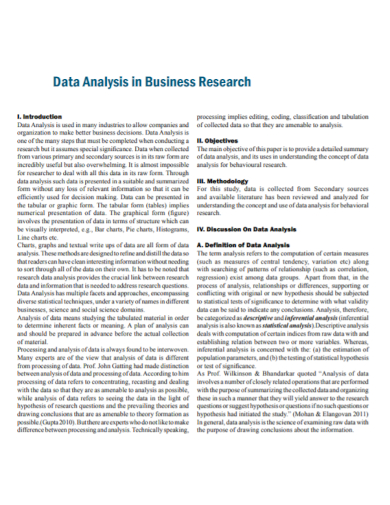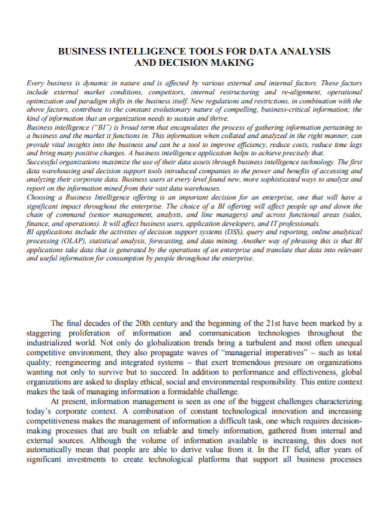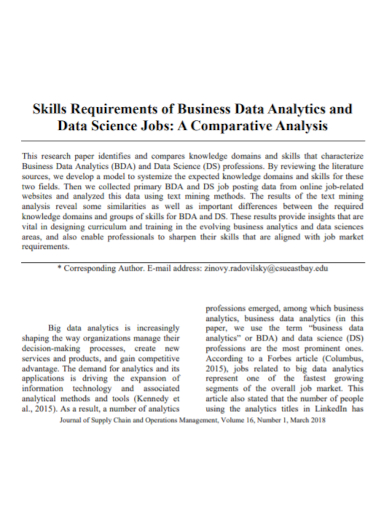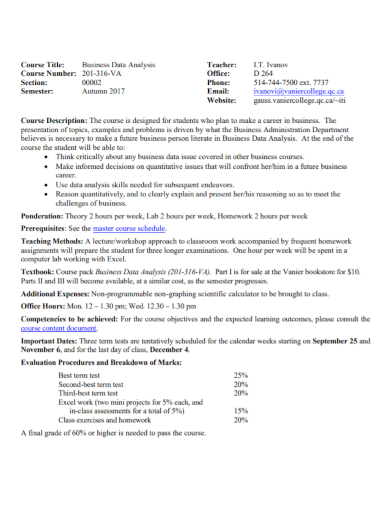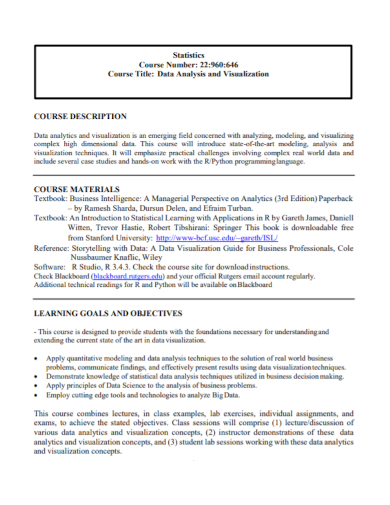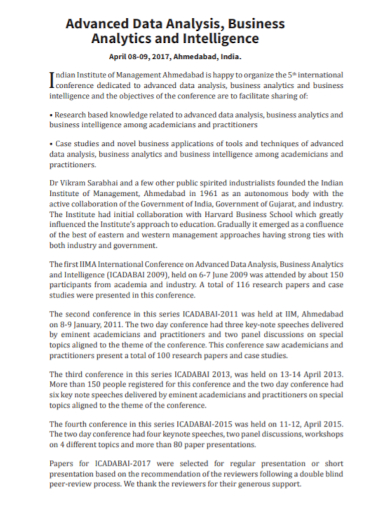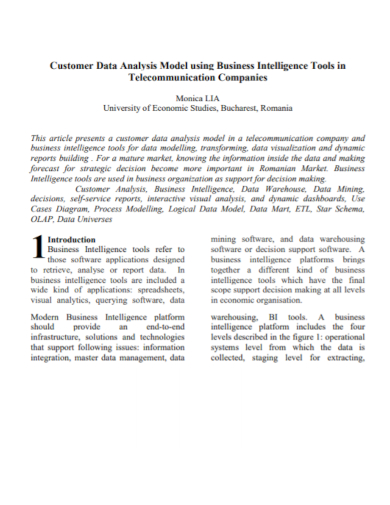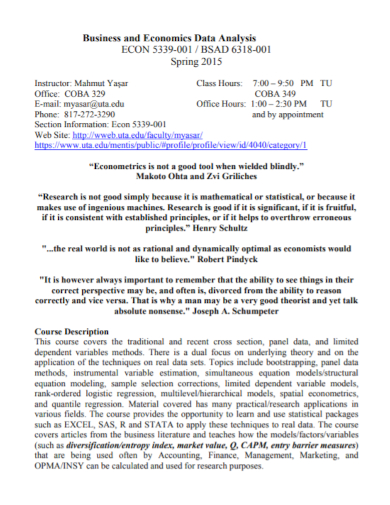Before businesses can fully come up with new products or develop a one of a kind service, there are companies that devout their time and effort to collect data relevant for the development of their enterprise. But gathering business data can be an overwhelming and daunting process. So where do you start and how do you analyze all these information? Let us dive into that today and learn more about business data analysis. Should you need any ready made templates you may want to check out our free business data analysis samples below:
10+ Business Data Analysis Samples
1. Business Data Analysis Report
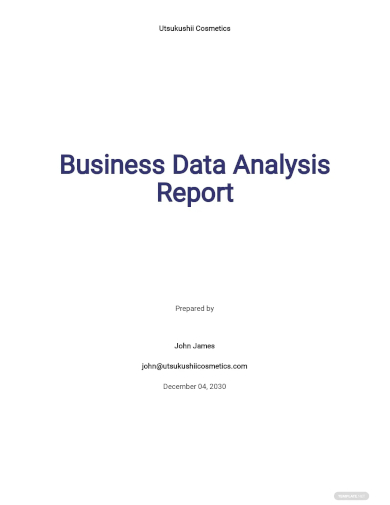
2. Business Research Data Analysis
3. Business Intelligence Data Analysis
4. Business Data Skills Analysis
5. Business Data Course Analysis
6. Business Data Statistics Analysis
7. Business Intelligence Data Course Analysis
8. Advanced Business Data Analysis
9. Business Intelligence Customer Data Analysis
10. Business Economics Data Analysis
11. Academic Business Data Analysis
What Is Business Data Analysis?
A business data analysis is a tool which manages vast amounts of data using technology and statistical methods in order to analyze and transform data into useful information, identify and anticipate trends and outcomes, in order to make decisions based on the gathered business data. Business data analysis includes the activities to help managers make strategic decisions, achieve major goals and solve complex problems, by collecting, analyzing and reporting relevant useful information. These information could be anything that cause the current situation, anticipate the trends that may likely occur and what should be done about it.
How To Analyze Business Data?
The use of data analysis in business as mentioned, can help companies make better business decisions. Whether it’s for product or market research, brand positioning, customer reviews, sentiment analysis, or any other issue for which data exists, analyzing data will provide insights that organizations need in order to make the right choices. There are four primary methods of business analysis, which are descriptive–the interpretation of data to identify trends and patterns; prescriptive which is the application of testing and other techniques to determine which outcome will yield the best result in a given scenario; diagnostic analytics which answer why something happened and lastly predictive–the use of statistics to forecast future outcomes. In order to analyze business data these steps can help your data analysis process:
1. Define the Problem
In your business data analysis, you must begin by defining the problem and asking the right questions. Design your questions to either qualify or disqualify potential solutions to your specific problem or opportunity.
2. Measurement Priorities
As you are able to define the problem with questions on hand, it is time to determine what and how to measure your data that would be relevant to the initial problem. Consider what kind of data you’d need to answer your key question. Thinking about how you measure your data is just as important, especially before the data collection phase, because your measuring process either backs up or discredits your analysis later on. You may want to examine the following scenario as such the timeframe and factors that should be included.
3. Data Collection
As you start collecting relevant data, here are some components to remember:
- Determine what information could be collected from existing databases or sources on hand
- Be prepared in advance with your questions should you need to gather data via interview or observation.
- Determine a file storing and naming system ahead of time to help all tasked team members collaborate. This process saves time and prevents team members from collecting the same information twice.
- Keep your collected data in an organized file for easier access, including collection dates and add any source notes to validate the authenticity of the data collected.
4. Analyzing Business Data
Once you collected the right amount of data, it’s time for deeper data analysis. Analyzing data can be done manually which can be a very daunting task or presently there are a number of data analysis tools and software that can be quite helpful and this could get the job done quickly. A very good and common example of which is the Microsoft Excel.
5. Interpreting Results
As you go on to interpret the results of your data, keep in mind first and foremost if the data was able to solve the problem and answer the questions relevant to it; did the data help you defend against any objection?; and are there any limitation on your conclusions, any angles you haven’t considered? If most of these have been addressed to, then you can make a likely decision and course of action based on the data gathered.
FAQs
Who Are Business Analyst?
Business Analyst are professionals who evaluate past and current business data with the primary goal of improving decision-making processes within organizations.
What Is a Qualitative Data?
Qualitative data describes qualities or characteristics and is collected through questionnaires, interviews, or observation.
Why Is Data Analytics Important?
It is important especially to businesses because it helps enhance their performance. Implementing it into the business model means companies can help reduce costs by identifying more efficient ways of doing business and by storing large amounts of data.
Never forgo the importance of data collection, this is how business can better assess their performance and what needs to be implemented in order to grow and develop successfully. More importantly, conducting regular data analysis will make better, more informed decisions to run your organization most effectively.
Related Posts
FREE 10+ Rhetorical Analysis Samples in PDF
FREE 10+ Analysis of Alternatives Samples in PDF
FREE 10+ Failure Mode and Effects Analysis Samples in PDF
FREE 10+ Make or Buy Analysis Samples in PDF
FREE 10+ Fishbone Root Cause Analysis Samples in PDF
FREE 11+ Cost Volume Profit Analysis Samples & Templates in PDF | MS Word
FREE 6+ Corporate Portfolio Analysis Samples in PDF
FREE 10+ Fault Tree Analysis Samples in PDF
FREE 10+ Comp Analysis Samples in PDF
FREE 10+ Fishbone Analysis Samples in PDF
FREE 10+ Individual Swot Analysis Samples in PDF
FREE 10+ 5 Year Analysis Samples in PDF
FREE 10+ Benefit Costs Analysis Samples in PDF
FREE 10+ Job Hazard Analysis Samples in PDF
FREE 10+ Primary Source Analysis Samples in PDF

